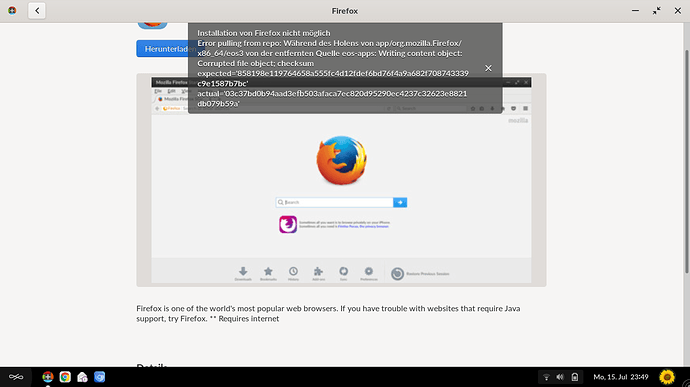Mozilla 1.7 Firefox 2.0.x: Solaris 9: Gnome-Metacity 2.4.34 or later CDE-dtwm: Mozilla 1.4, 1.7: Solaris 8: CDE-dtwm, Openwin-olwm: Oracle Solaris SPARC (64) Oracle Solaris 11: Gnome 2.30.2: Firefox 3.x and above (see footnote) 32-bit or 64-bit Install, (no Java Plug-in, Java Web Start support). Web application installation is a feature available in modern browsers that allows users to choose to easily and conveniently “install” a web application on their device so they can access it in the same way they would any other installed app. Depending on the device and features of the operating system and browser, this can result in what.

Getting Firefox installed on your computer is your first step to using it. This article will show you how to install Firefox on Linux.
For other operating systems see:
Many Linux distributions include Firefox by default while most have a package management system - a preferred way to install Firefox. Package management system will:
- Ensure that you have all the required libraries
- Install Firefox optimally for your distribution
- Create shortcuts to launch Firefox
- Make Firefox available to all users of your computer
- Make removing Firefox work the same as removing any other application
Package management system has downsides:

- It may not give you the latest Firefox version
- It may give you a version without Firefox branding
You can also install Firefox through the Flatpak option.
Flatpak is a new packaging format for Linux. To setup Flatpak, visit FlatPak's setup guide and select your OS and follow the installation steps.
Once you have Flatpak installed, go to the Firefox Flathub page and click the button. Once downloaded, follow the command line instructions at the bottom of the page.
Once Firefox is installed from Flatpak, updates are automatic so no need to reinstall.
Download a specific locale version
When installing Flatpak (via the command line or via the Flathub url link), the OS locale is being checked (OS locale and not the browser accept language header) and Flathub only sends the locales that share the same prefix. So for example if LANG=en_US.UTF-8 Flatpak will send locales that have the common prefix en which are en-CA, en-GB etc.
To download a specific locale it can be done manually. For example, specific installation of French (fr) locale:flatpak update --subpath=/fr org.mozilla.firefox.Locale
To install Firefox using the package manager, please refer to your Linux distribution's documentation.
The support sites for some Linux distributions have complete instructions on how to install Firefox without using a package manager, although a few information may be out of date. For example:
You can also follow the instructions below to manually install on each user's account.
- Before you install Firefox, make sure that your computer has the required libraries installed. Missing libraries will cause Firefox to be inoperable.
- The installation file provided by Mozilla in .tar.bz2 format has pre-compiled binary files as opposed to sources. There is no need to compile the program from the source: simply unpack and run the binaries.
- The following instructions will install Firefox into your home directory. Only the current user will be able to run it.
- Download Firefox from the Firefox download page to your home directory.
- Open a Terminal and go to your home directory:
cd ~
- Extract the contents of the downloaded file:
tar xjf firefox-*.tar.bz2
- Close Firefox if it's open.
- To start Firefox, run the firefox script in the firefox folder:
~/firefox/firefox- Firefox should now start. You can then create an icon on your desktop to run this command.
- There's no need to keep the installation file:
rm firefox-*.tar.bz2
libstdc++5 error
As noted above, you need to install the required libraries for Firefox to work. Many distributions don't include libstdc++5 by default.
'firefox not installed' message or wrong version of Firefox starts
If Firefox is installed following the instructions given above, it must be started (in a Terminal or in a launcher on the Desktop, for example) using the command: ~/firefox/firefox
Install Mozilla Bg
If you try to start Firefox in a Terminal with the command: firefox, it will either start the package-manager-installed version of Firefox or will tell you the program is not installed.




